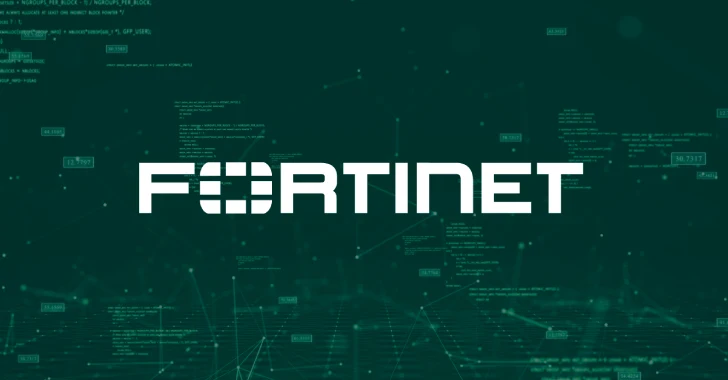
Fortinet Releases Patch for Critical SQL Injection Flaw in FortiWeb (CVE-2025-25257)
FortiWeb Under Fire: Fortinet Patches Critical SQL Injection (CVE-2025-25257)
The digital perimeter of many organizations relies heavily on Web Application Firewalls (WAFs) to thwart sophisticated attacks. When these critical defenses themselves become vulnerable, the alarm bells ring loud and clear. Fortinet, a leading cybersecurity решения, has recently released urgent patches for a severe SQL Injection vulnerability impacting its FortiWeb appliances. Tracked as CVE-2025-25257, this flaw presents a significant risk, allowing unauthenticated attackers to execute arbitrary database commands. This post delves into the specifics of this vulnerability, its potential impact, and the essential steps organizations must take to secure their FortiWeb deployments.
Understanding CVE-2025-25257: The FortiWeb SQL Injection
The vulnerability identified as CVE-2025-25257 is categorized as an improper neutralization of special elements used in an SQL command, more commonly known as an SQL Injection (CWE-89). This occurs when an attacker can manipulate input fields or parameters within a web application to inject malicious SQL code. Instead of being treated as data, this injected code is executed by the backend database, potentially leading to unauthorized data access, modification, or even complete system compromise.
With a CVSS score of 9.6 out of a maximum of 10.0, CVE-2025-25257 is firmly in the “critical” severity range. Its high score is attributed to several factors:
- Unauthenticated Access: Attackers do not need valid credentials to exploit this vulnerability.
- Arbitrary Database Command Execution: This flaw empowers threat actors to run virtually any command on the underlying database, granting extensive control.
- Impact on a WAF Solution: A compromised WAF can be turned against the very applications it’s designed to protect, becoming a potential gateway for deeper network penetration.
The Peril of Unauthenticated Database Compromise
The most immediate and severe consequence of CVE-2025-25257 is the potential for an unauthenticated attacker to take control of the FortiWeb appliance’s database. This access could lead to:
- Data Exfiltration: Sensitive configuration data, user credentials, and potentially even logs from the WAF itself could be stolen.
- System Modification: Attackers could alter the WAF’s rules, potentially disabling protections, creating backdoors, or redirecting traffic.
- Remote Code Execution (RCE) Chain: While not directly RCE, database command execution often serves as a pivot point to achieve RCE on the underlying operating system, escalating the compromise significantly.
- Denial of Service: Malicious commands could disrupt the WAF’s functionality, leading to a denial of service for the protected applications.
Given that FortiWeb is designed to be the first line of defense for web applications, a compromise of this nature could expose an organization’s crown jewels, jeopardizing business operations and customer trust.
Remediation Actions: Patch Your FortiWeb Immediately
Fortinet has acted swiftly to provide patches for CVE-2025-25257. The primary and most critical remediation step is to update your FortiWeb appliance to a patched version immediately. Neglecting to do so leaves your network critically exposed.
Fortinet has released fixes in the following versions:
- FortiWeb versions prior to 7.0.8
- FortiWeb versions prior to 6.3.23
It is imperative to consult Fortinet’s official security advisories for the exact patched versions and upgrade paths. Always back up your configurations before performing any significant software updates.
Recommended Mitigation Strategies:
- Prioritize Patching: Do not delay. Schedule and apply the necessary patches as soon as possible.
- Network Segmentation: Ensure your FortiWeb appliance is deployed in a properly segmented network zone, limiting its exposure to unnecessary internal or external traffic.
- Least Privilege: Review and enforce the principle of least privilege for any management interfaces or integrations with FortiWeb.
- Regular Audits: Conduct periodic security audits and vulnerability scans of your WAF appliances and the applications they protect.
- Monitor Logs: Increase vigilance on FortiWeb logs for any unusual activity, failed login attempts, or anomalous database queries.
Detection and Scanning Tools
While patching is the ultimate solution, organizations can also leverage various tools for vulnerability scanning and asset discovery to identify exposed FortiWeb instances or to confirm successful patching.
| Tool Name | Purpose | Link |
|---|---|---|
| Nessus | Comprehensive vulnerability scanning, often includes plugins for Fortinet product vulnerabilities. | https://www.tenable.com/products/nessus |
| OpenVAS / Greenbone Security Manager | Open-source vulnerability scanner, robust for network and web application scanning. | https://www.greenbone.net/ |
| Qualys VMDR | Cloud-based vulnerability management, detection, and response platform. | https://www.qualys.com/vmdr/ |
| Nmap (Scripting Engine) | Network discovery and security auditing. Can be extended with NSE scripts to detect specific vulnerabilities. | https://nmap.org/ |
| FortiAnalyzer / FortiManager | Fortinet’s own centralized logging, reporting, and management tools can help monitor device health and update status. | https://www.fortinet.com/products/security-management |
Stay Ahead of the Curve
The disclosure of CVE-2025-25257 serves as a stark reminder that even robust security appliances are not immune to critical flaws. For cybersecurity analysts, IT professionals, and developers, the key takeaway is the urgency of vulnerability management. Timely patching, continuous monitoring, and adherence to security best practices are indispensable in maintaining a resilient security posture. Fortinet’s prompt action in releasing fixes is commendable, but the responsibility now falls on organizations to implement these updates without delay. Secure your FortiWeb devices, protect your web applications, and safeguard your critical data.





